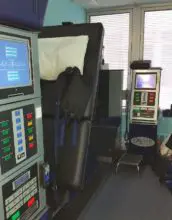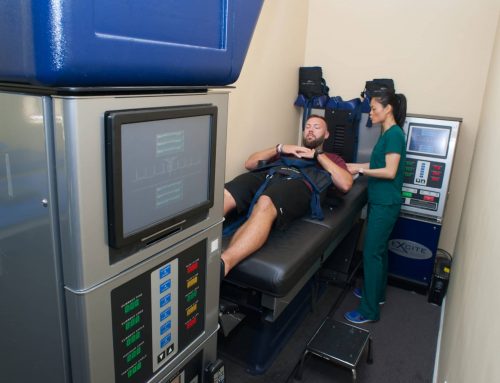
There are two methods of spinal decompression – a non-surgical way and a surgical one. Experts have not been able to get enough research data to prove that the non-surgical way can get better results than more traditional ways, but people are still seeking it out. It’s not for everyone, though – if one has a abdominal aortic aneurysm, fracture, metal spinal implants, osteoporosis, or a tumor, they should not do this.
Before undergoing the non-surgical method, a patient may have tried a variety of ways to ease their back pain, like acupuncture, bracing, chiropractic, exercise, taking Non-Steroidal pain medication, physical therapy, rest, and steroids.
When a patient does the non-surgical spinal decompression, they will be fully-dressed. A doctor puts a harness around their trunk and another around their pelvis and they will lay on a machine. Then a computerized program will pull the harnesses and that will create space between the spinal columns and allow for relief and healing. A session takes about 45 minutes and the patient may need to do about 28 sessions over 5-7 week period to see the best results.
The surgical method of spinal decompression is generally viewed as being a last resort, when all else has failed. Symptoms like numbness, pain, tingling, and weakness have continued to persist even with the regimen of treatments listed above. Spinal fusion might be needed, as well. There are several types of surgery – corpectomy, disketomy, foraminectomy, laminectomy, and osteophyte removal. No surgery is more common than the other – it depends on the patient’s situation. The surgeries can involve anything from removing bony growths to vertebral bodies.
There are risks attached with the surgical spinal decompression – including adverse reaction to anesthesia, blood clots, bleeding, infection, and nerve damage. Those risks are not unique to this surgery, though – but they are present and should be acknowledged even if the chances of them occurring are very low.
Dr. Steven Moalemi and the staff at Spinal Decompression NYC use the non-surgical method with two machines, the DRX9000 and the DRX9000C. He and the staff work closely with patients to ensure the best results.
Published By:
Empire Physical Medicine & Pain Management
7 W 45th St floor 9,
New York, NY 10036
Phone: (646) 665-7109
Website: https://manhattanpainrelief.com


